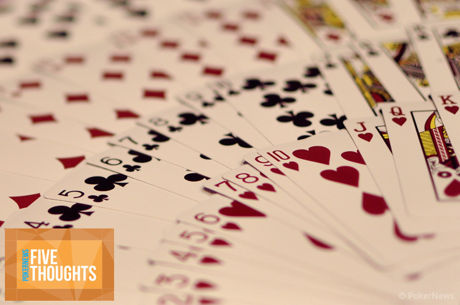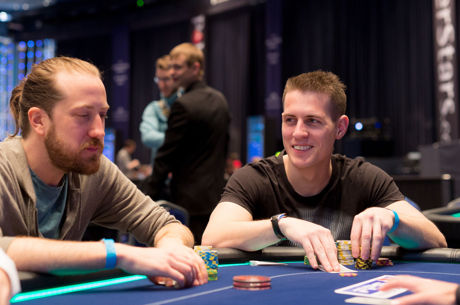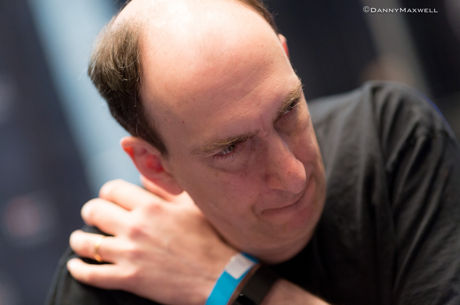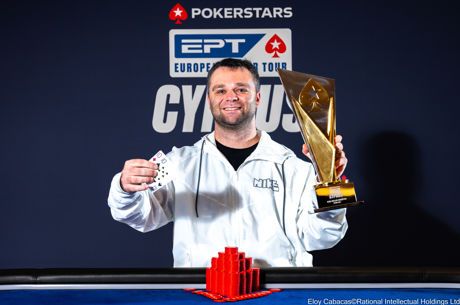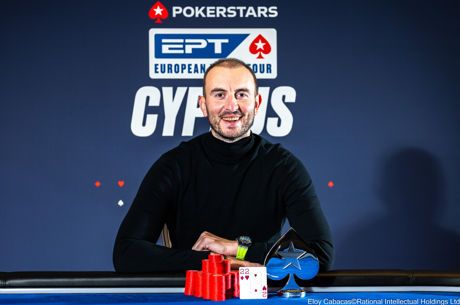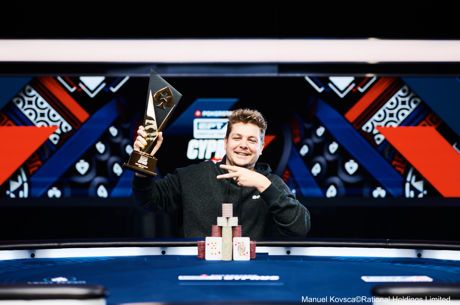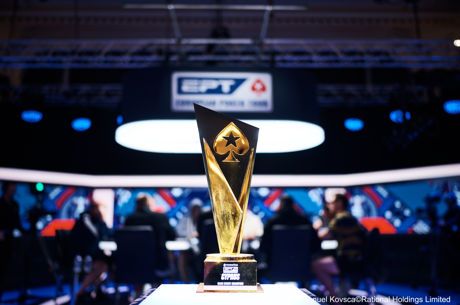Was Steve O'Dwyer Robbed of EPT Player of the Year?
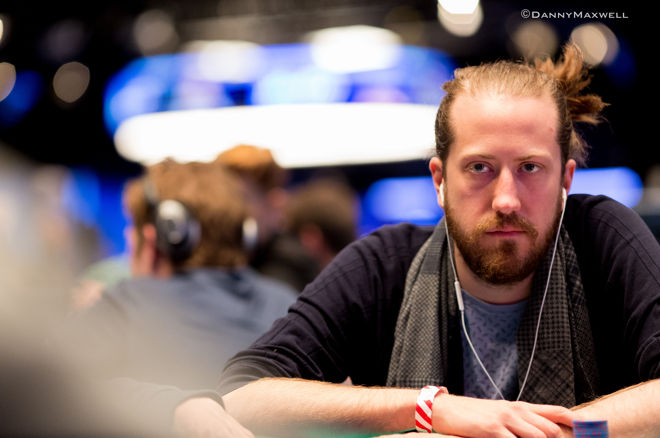
If you're asking this author, the answer is yes. More than anything, Steve O'Dwyer fell victim to a formula that lacks common sense. O'Dwyer had more wins, more final tables, and far more earnings than the player who won the title, Mike "Timex" McDonald.
Following the completion of the 2016 PokerStars and Monte-Carlo? Casino EPT Grand Final, the 12th season of the European Poker Tour had come to an end. With that end came the completion of the EPT Player of the Year race, and it was McDonald narrowly edging out O'Dwyer by less than one point.
While many of those paying attention got lost in the excitement surrounding the down-to-the-wire rack, the thought of the two players fighting neck and neck until the end was a little bit of a surprise to me. Could someone really challenge O'Dwyer given that he won two super high rollers, won a �10,200 tournament, made seven final tables, and won over $2.7 million? If that's not an obliteration of Season 12, what is?
According to the scoring system, which was powered by the Global Poker Index, McDonald was the winner thanks to a seventh-place finish in the final event at the EPT Grand Final, the �10,200 Six-Max No-Limit Hold'em Turbo. For this finish, McDonald scored 243.20 points, or 11.86 points more than O'Dwyer scored for taking ninth in the �50,000 Super High Roller. Yes, McDonald did finish two places higher in an event with a couple more entries, but O'Dwyer's buy-in was five times that of McDonald's. The thing is, the buy-ins are capped at $20,000 for the GPI scoring system.
Let's have a look at the results from the two players.
Mike McDonald's Results
| Festival | Buy-In | Entries | Place | Prize | Points |
|---|---|---|---|---|---|
| Grand Final | �10,200 | 73 | 7 | �33,990.00 | 243.20 |
| Grand Final | �550 | 167 | 10 | �1,580.00 | 45.36 |
| Dublin | �5,200 | 33 | 4 | �18,405.00 | 174.36 |
| Dublin | �5,300 | 605 | 60 | �10,270.00 | 193.12 |
| Dublin | �1,100 | 96 | 5 | �7,170.00 | 107.39 |
| PCA | $5,300 | 59 | 5 | $23,460.00 | 197.52 |
| PCA | $2,200 | 182 | 23 | $3,880.00 | 110.98 |
| Prague | �2,200 | 146 | 17 | �4,105.00 | 121.41 |
| Prague | �550 | 204 | 28 | �870.00 | 29.52 |
| Prague | �5,300 | 1044 | 139 | �9,220.00 | 166.78 |
| Prague | �5,200 | 54 | 7 | �13,750.00 | 168.11 |
| Prague | �2,200 | 748 | 58 | �4,750.00 | 143.53 |
| Malta | �5,300 | 651 | 27 | �17,840.00 | 263.95 |
| Malta | �25,750 | 74 | 1 | �498,575.00 | 496.65 |
| Barcelona | �10,300 | 506 | 12 | �60,900.00 | 363.58 |
| Barcelona | �5,300 | 1694 | 43 | �22,840.00 | 308.28 |
| Barcelona | �25,500 | 152 | 5 | �257,000.00 | 378.94 |
| Barcelona | �50,000 | 99 | 12 | �87,900.00 | 234.68 |
Steve O'Dwyer's Results
| Festival | Buy-In | Entries | Place | Prize | Points |
|---|---|---|---|---|---|
| Grand Final | �25,750.00 | 231 | 31 | �49,800.00 | 240.75 |
| Grand Final | �50,000.00 | 70 | 9 | �98,480.00 | 231.34 |
| Dublin | �2,150.00 | 83 | 4 | �15,860.00 | 170.22 |
| Dublin | �1,100.00 | 96 | 2 | �17,180.00 | 140.69 |
| PCA | $5,300.00 | 928 | 89 | $10,840.00 | 187.62 |
| PCA | $50,000.00 | 80 | 1 | $945,495.00 | 525.28 |
| Prague | �25,500.00 | 80 | 11 | �49,000.00 | 237.84 |
| Prague | �50,000.00 | 56 | 1 | �746,543.00 | 458.95 |
| Malta | �2,000.00 | 174 | 6 | �8,750.00 | 180.15 |
| Malta | �5,300.00 | 651 | 57 | �10,580.00 | 201.98 |
| Malta | �10,200.00 | 134 | 1 | �327,030.00 | 471.34 |
| Malta | �2,200.00 | 403 | 43 | �3,835.00 | 126.96 |
| Barcelona | �25,500.00 | 152 | 12 | �63,300.00 | 274.00 |
| Barcelona | �50,000.00 | 99 | 7 | �221,000.00 | 299.29 |
Looking at those results, it appears McDonald performed better in only the total number of cashes, where he recorded 18 in-the-money finishes to O'Dwyer's 14. O'Dwyer made one more final table and recorded two more wins than McDonald, though, and we all know closing counts in poker.
One thing McDonald did have in his favor was that his cashes came in events with an average field size of 365.9 entries, whereas O'Dwyer's were a smaller 231.2 entries. That might tip the scale back in favor of McDonald for some, but enough to overcome O'Dwyer? No. We're talking about cashes. Performance shouldn't be graded higher due to just cashes.
Speaking of cash, let's talk money. McDonald's average result was nearly a third of O'Dwyer's, and O'Dwyer hauled in more than double the prize money. As my colleague Marty Derbyshire pointed out in a recent Five Thoughts article here on PokerNews, how do we all keep score in poker? It's money won, and O'Dwyer crushed McDonald in that statistic.
| Player | Cashes | Final Tables | Wins | Avg. Buy-In |
|---|---|---|---|---|
| McDonald | 18 | 6 | 1 | $10,437.50 |
| O'Dwyer | 14 | 7 | 3 | $23,967.30 |
| Avg. Field Size | Avg. Finish | Avg. Cash | Money Won | |
| McDonald | 365.9 | 25.7 | $67,466.28 | $1,214,393 |
| O'Dwyer | 231.2 | 19.6 | $195,352.29 | $2,734,932 |
When we put the metrics side by side, it seems fairly clear that O'Dwyer was the better performer over Season 12 of the EPT, but also that he fell victim to the buy-in cap.
Time To Remove the Buy-In Cap?
The European Poker Tour is a beast of a tour, and with it come plenty of expensive buy-ins. Last season, there were six EPT festivals �� Barcelona, Malta, Prague, PokerStars Caribbean Adventure, Dublin, and the Grand Final in Monaco �� and 17 official "high roller" or "super high roller" tournaments. Here's how the field sizes looked for those events.
| Festival | �100,000 | �50,000 | �25,000 | �10,000 |
|---|---|---|---|---|
| Barcelona | -- | 99 | 152 | 506 |
| Malta | -- | -- | 74 | 210 |
| Prague | -- | 56 | 80 | 252 |
| PCA | 58 | 80 | 225 | -- |
| Dublin | -- | -- | 58 | 185 |
| Grand Final | 61 | 70 | 231 | 214 |
| Average | 59.5 | 76.3 | 136.7 | 273.4 |
As you can see from the table above, there is a significant drop off when you step up in buy-in level, most specifically between the top three tiers of �25,000, �50,000, and �100,000. From the �25,000 buy-in level to the �50,000 buy-in level, there is a decrease of more than 44 percent in the field size. Then from the �50,000 buy-in level to the �100,000 buy-in level, there is a field-size decrease of 22 percent, and a decrease of 56.5 percent from the average field size in a �25,000 buy-in event to a �100,000 buy-in event.
With such big drop offs from level to level, it shows that the big buy-in tournaments aren't just circulating the same amount of players, but instead the field becomes more and more select with each price jump. Knowing that, a player should be rewarded for going up in buy-in level and performing well, not restricted to a cap of $20,000. Even though the fields are smaller, they're extremely tough fields with excellent structures and more money is at risk. It's time to remove the buy-in cap and correctly adjust the formula with properly weighted variables.
At the end of the day, this feels like it falls under "don't hate the player, hate the game" and the game is the formula.
Want to stay atop all the latest in the poker world? If so, make sure to get PokerNews updates on your social media outlets. Follow us on Twitter and find us on both Facebook and Google+!

